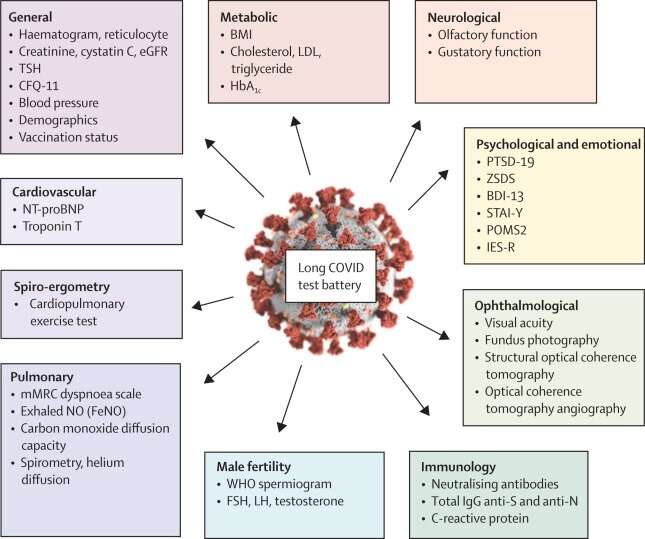Having high cholesterol and reduced physical stamina and being overweight are long COVID sequelae in young adults

Healthy young people with just a mild COVID infection can sometimes suffer temporary post-infection consequences such as tiredness, loss of smell and taste or reduced fertility. These symptoms usually improve with time. But a new UZH study conducted with Swiss Armed Forces personnel shows that young people post COVID are likely to have increased cholesterol, a high BMI, and a reduced level of physical stamina. As a result, they may be more likely to develop metabolic disorders and cardiovascular complications in the long term.
As the COVID-19 pandemic evolves, the issue of post-infection consequences is growing in significance. Does long COVID impact previously healthy young adults? Although this group is of great societal importance, representing the next generation and the backbone of the workforce, the intermediate-term and long-term effects of SARS-CoV-2 infections have scarcely been researched in this population. Available original research tends to focus on sufferers who were hospitalized, the elderly or those with multiple morbidities, or restricts evaluations to a single organ system.
Long COVID implications in young Swiss military personnel
A new study, supported by the Swiss Armed Forces, and conducted under the leadership of Patricia Schlagenhauf, Professor at the Epidemiology, Biostatistics and Prevention Institute of the University of Zurich (UZH), has now evaluated possible long COVID implications in young Swiss military personnel.
The study, published in the journal Lancet Infectious Diseases, was done between May and November 2021 with 29 female and 464 male participants with a median age of 21. 177 participants had confirmed COVID-19 more than 180 days prior to the testing day, and the control group was made up of 251 SARS-CoV-2 serologically negative individuals. Unlike other studies the novel test battery also evaluated cardiovascular, pulmonary, neurological, ophthalmological, male fertility, psychological and general systems.
Despite overall recovery, sequelae after recent infections remain
The findings show that young, previously healthy, non-hospitalized individuals largely recover from mild infection and that the impact of the SARS-CoV-2 virus on several systems of the body is less than that seen in older, multi-morbid or hospitalized patients.
However, the study also provided evidence that recent infections—even mild ones—can lead to symptoms such as fatigue, reduced sense of smell and psychological problems for up to 180 days, as well as having a short-term negative impact on male fertility. For non-recent infections—more than 180 days back—these effects were no longer significant.
Specific constellation carries risk of developing metabolic disorders
For those with non-recent infections, however, the study—which had a long follow-up—provided evidence of a potentially risky constellation: "Increased BMI, high cholesterol and lower physical stamina is suggestive of a higher risk of developing metabolic disorders and possible cardiovascular complications," says principal investigator Patricia Schlagenhauf. "These results have societal and public-health effects and can be used to guide strategies for broad interdisciplinary evaluation of COVID-19 sequelae, their management, curative treatments, and provision of support in young adult populations."
The study, conducted in collaboration with clinics at the University Hospital Zurich and Spiez Laboratory, is novel in that it quantitatively evaluated multi-organ function using a sensitive, minimally invasive test battery in a homogenous group of people several months after a COVID-19 infection. A valuable facet of the study was the control group, serologically confirmed to have had no SARS-CoV-2 exposure. "This combination of a unique test battery, a homogenous cohort and a control group make this a very powerful, landmark study in the evidence base on Long COVID in young adults," says Schlagenhauf.
More information: Jeremy Werner Deuel et al, Persistence, prevalence, and polymorphism of sequelae after COVID-19 in unvaccinated, young adults of the Swiss Armed Forces: a longitudinal, cohort study (LoCoMo), The Lancet Infectious Diseases (2022). DOI: 10.1016/S1473-3099(22)00449-2



















